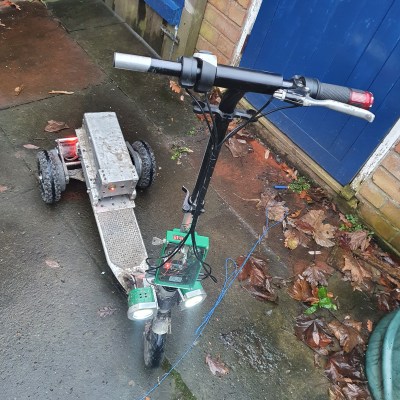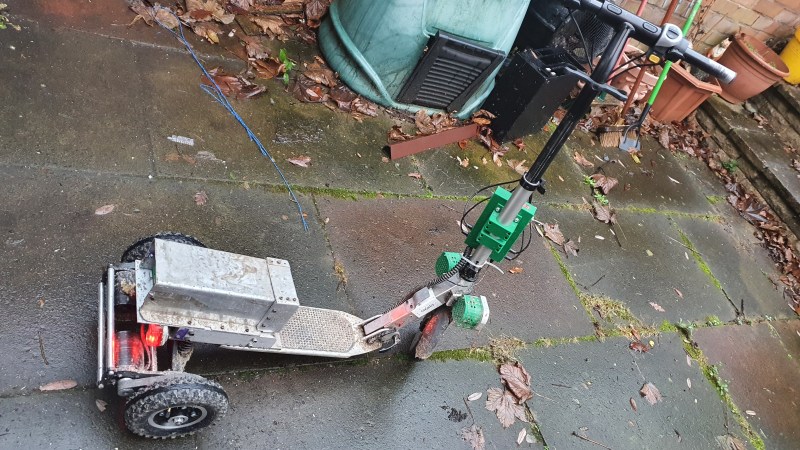The story of how [Tony]’s three-wheeled electric scooter came to be has a beginning that may sound familiar. One day, he was browsing overseas resellers and came across a new part, followed immediately by a visit from the Good Ideas Fairy. That’s what led him to upgrade his DIY electric scooter to three wheels last year, giving it a nice speed boost in the process!
 The part [Tony] ran across was a dual brushless drive unit for motorizing a mountain board. Mountain boards are a type of off-road skateboard, and this unit provided two powered wheels in a single handy package. [Tony] ended up removing the rear wheel from his electric scooter and replacing it with the powered mountain board assembly.
The part [Tony] ran across was a dual brushless drive unit for motorizing a mountain board. Mountain boards are a type of off-road skateboard, and this unit provided two powered wheels in a single handy package. [Tony] ended up removing the rear wheel from his electric scooter and replacing it with the powered mountain board assembly.
He also made his own Arduino-based interface to the controller that provides separate throttle and braking inputs, because the traditional twist-throttle of a scooter wasn’t really keeping up with what the new (and more powerful) scooter could do. After wiring everything up with a battery, the three-wheeled electric scooter was born. It’s even got headlights!
[Tony]’s no stranger to making his own electric scooters, and the fact that parts are easily available puts this kind of vehicular experimentation into nearly anybody’s hands. So if you’re finding yourself inspired, why not order some stuff, bolt that stuff together, and go for a ride where the only limitation is personal courage?

















I would very much discourage anyone from making a three-wheeler with a single wheel in front. Reducing the ability to lean into a turn means you now have to turn harder. This drastically increase the chance of the force from the rear wheel dumping you off to the side of the machine instead of turning. This is precisely why this wheel configuration is illegal in most of the world.
Do you think that is mitigated at all by the mountain board trucks on the rear? To my mind that should provide a rotation point on the rear that you would not have with a fixed axel. While I think its still less than ideal compared to having trunks front and back, I do think that leaning would be a big part of operating this safely and that is allowed by the trucks. Thoughts?
Do you think you were the only child to crash their tricycle? 🤣
From his blog, I note that the drive he purchased has a pivot in the center, accompanied by a pair of small centering springs.
Illegal in most of the world? Please, enlighten us: where specifically is a three-wheel scooter or trike with a single front wheel illegal?
How is it an speed upgrade if he only got one more wheel to drag behind him and front hub drive?
Or is it all wheel drive now?
hes probably reffering to this https://www.youtube.com/watch?v=Sg4p-NAKcco